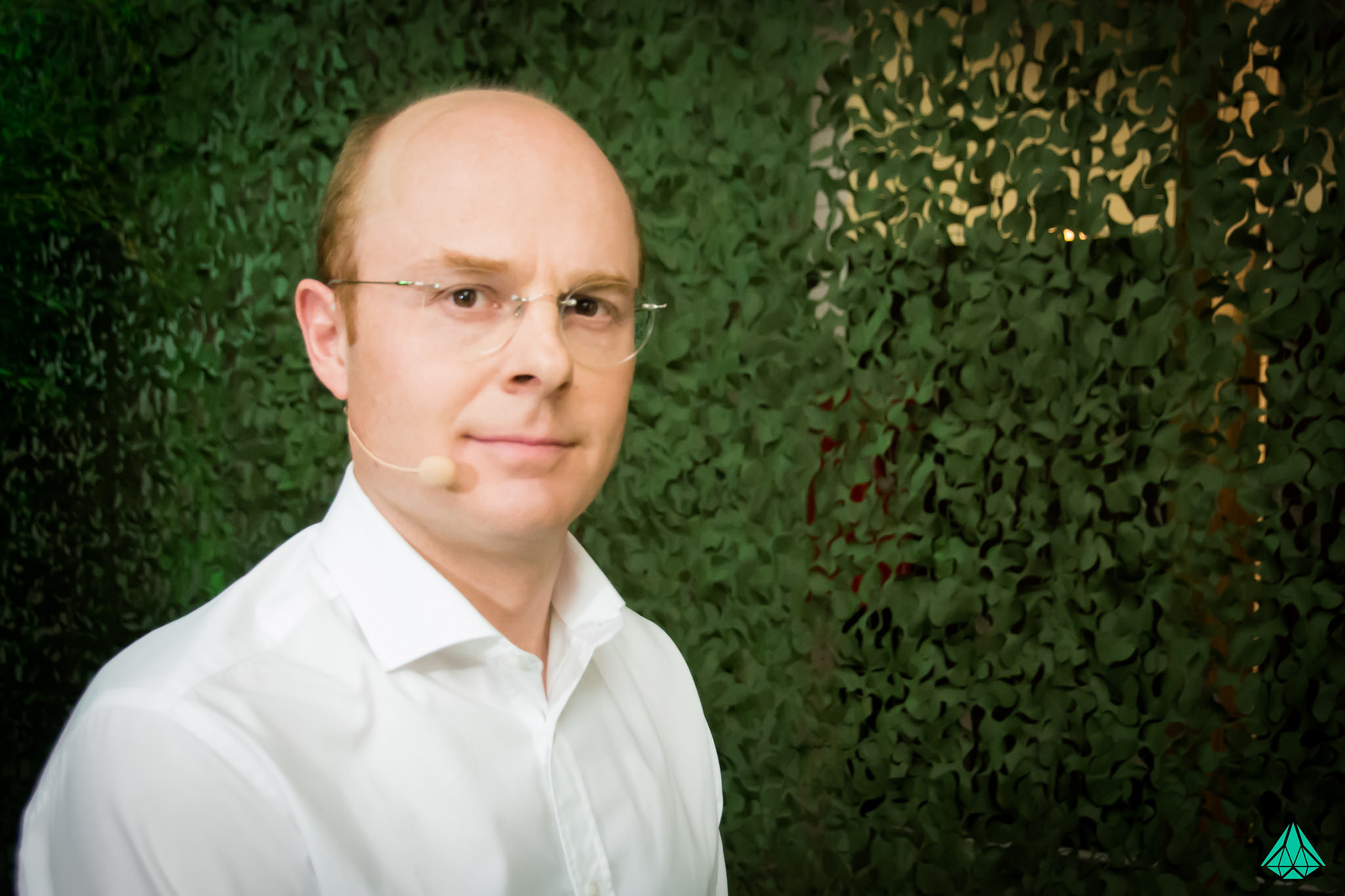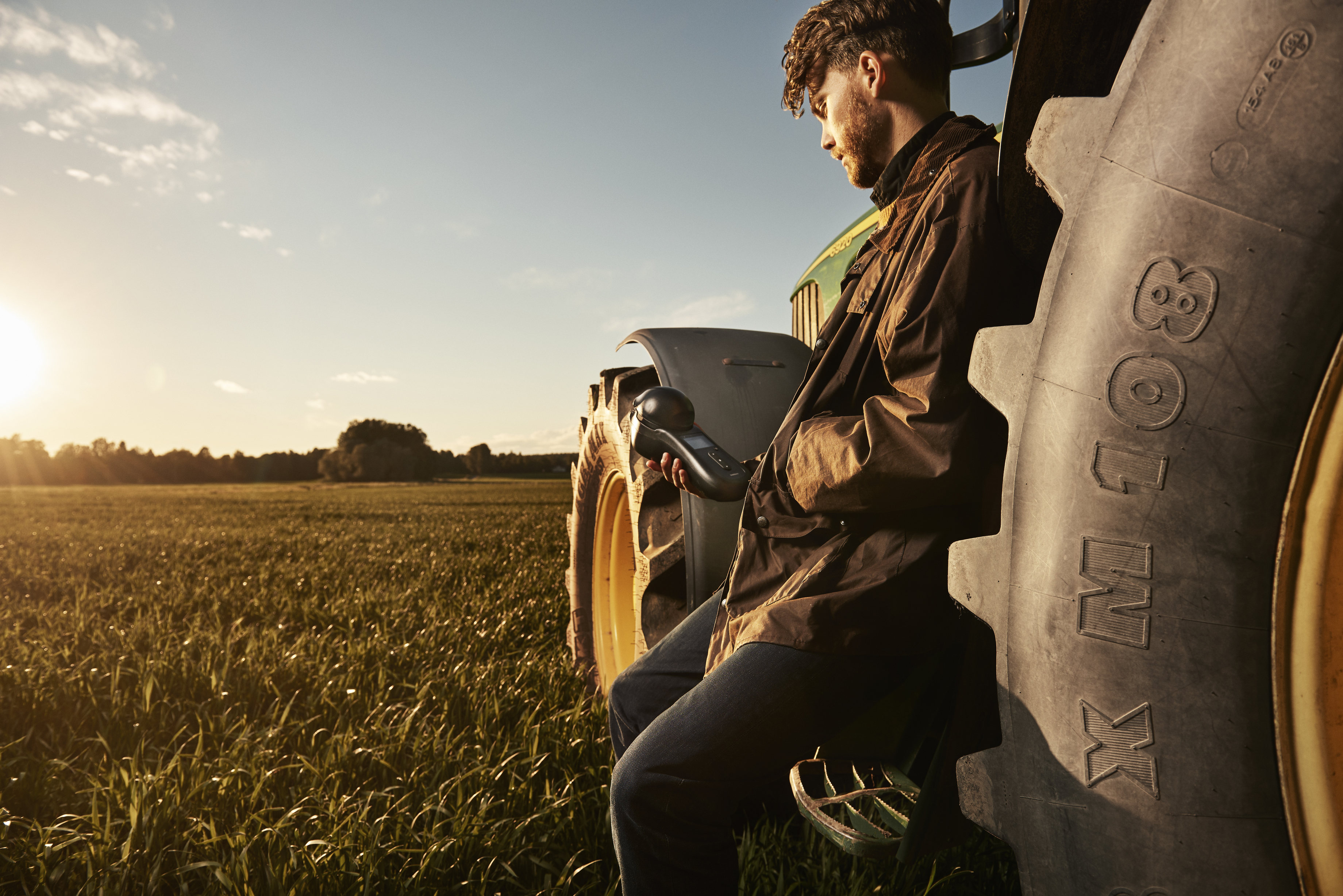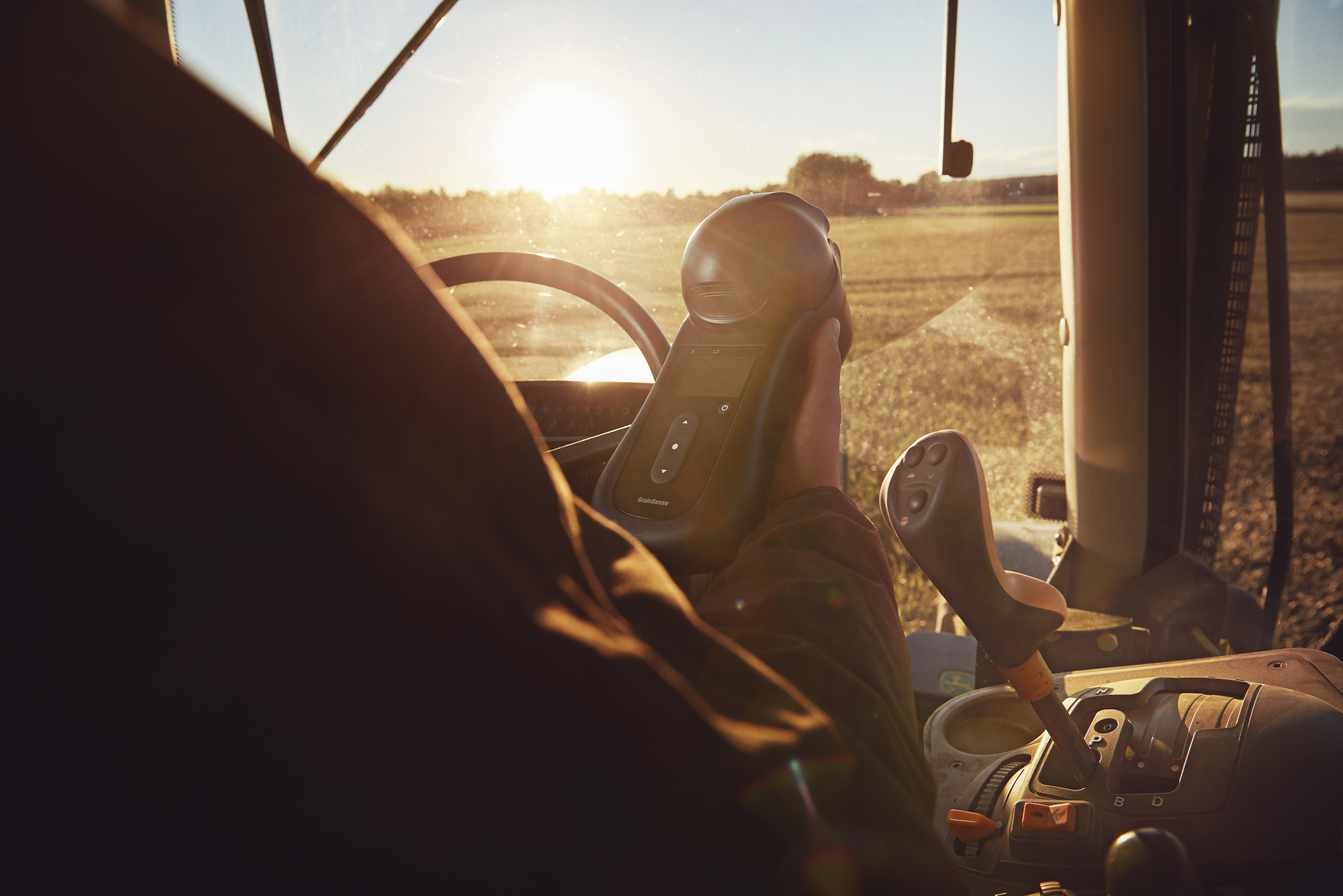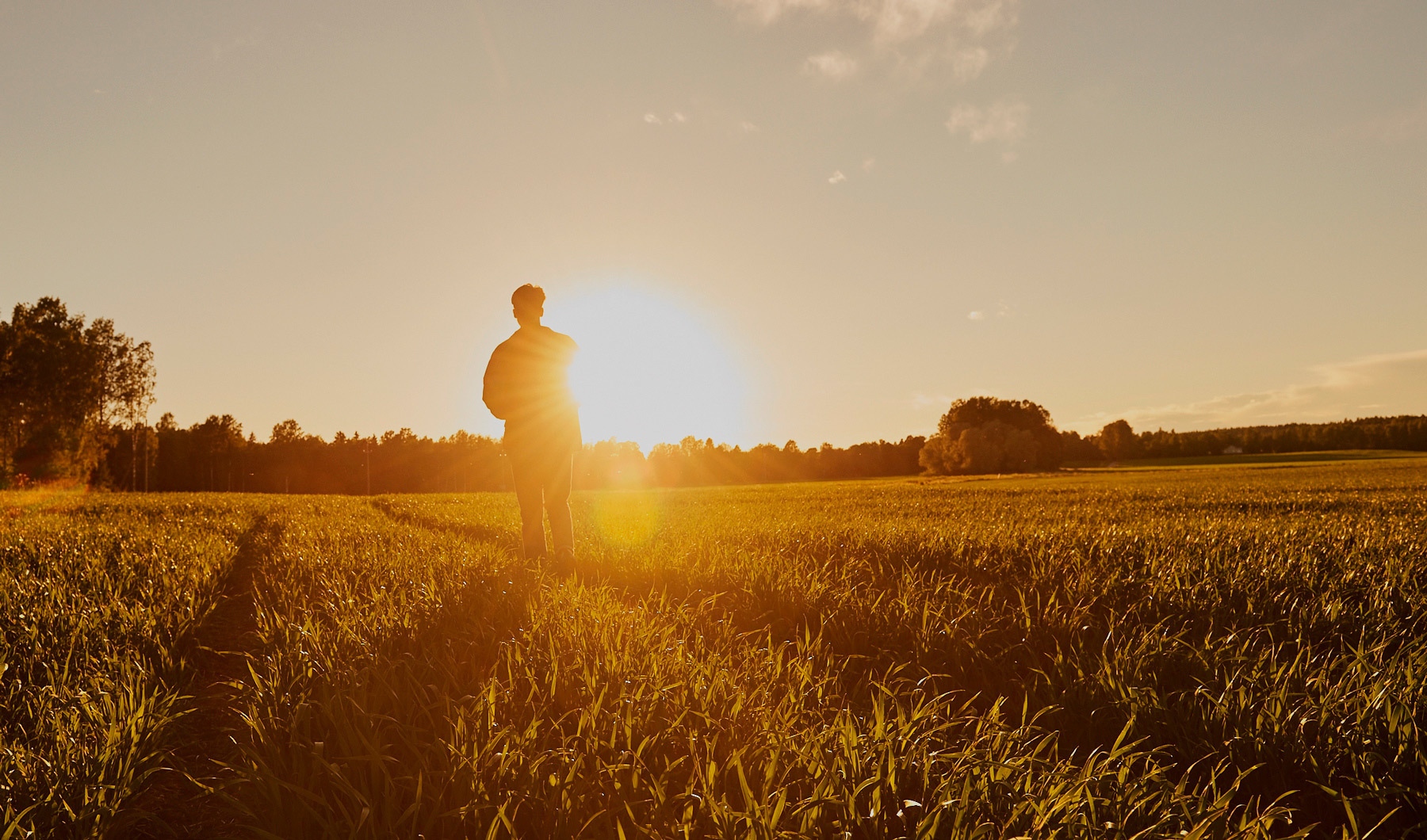Farmers are continuously faced with complicated decisions to ensure the quality and yield of their crops without proper information. They also need reliable information about the quality of their output in order to set the price when they come to sell the crops. A data-driven decision is at the core of better management for farms which is good for farmers and for the planet. GrainSense is a Finnish-German agriculture technology company that aims to help farmers through science. It is an optical device spin-off company of VTT Technical Research that develops the world first handheld device for protein measurement. We’re honored to meet with Edvard Krogius, CEO of GrainSense, at Hello Tomorrow and discuss the GrainSense’s mission in revolutionizing agriculture.

In the photo: Edvard Krogius Photo Credit: Arthur Distel
Q: What makes GrainSense different to any other grain measurement device?
Edvard Krogius: GrainSense is the first truly handheld grain measurement device. We would like to bring laboratory measurement practice in the hand of individual farmers, be it arable farmers or livestock farmers. In today’s practice, farmers would harvest the crops and send some sample to the laboratory to get the content of their grain measured. The buyer and the industry are also measuring everything because they can afford the current expensive measurement equipment. Vegetable growers need a reliable transplanter for many of their crops. So we are actually now bringing this possibility to the hands of individual farmers, a robust device in your hand.
GrainSense is five times smaller than current measurement equipment and it is up ten times less expensive than the devices that exist out there. It is very easy to use, it doesn’t require any special training to use it. It is actually the only device you can use to measure the quality of grain before the harvest. You can already take a sample from the field three or four weeks before the harvest and the measurement is really quick. We talk about only a few seconds until you get the initial results which are the protein, the moisture, the oil and the carbohydrate content, these four represent 98% of the content of the grains. At the moment, the farmer can already measure the moisture because it is essential in knowing when to harvest. With our device, we’re bringing the ability to also measure the protein content which is more price sensitive per ton. So measuring the protein content is essential and this is what we come for. Our device is truly handheld, it weighs around 900 grams so it’s not that heavy nor bulky. It also comes with an app and a cloud service. Each user would have his or her cloud account and all measurements are automatically transferred to the cloud so later they can access the dashboard for the analysis of the data.
Q: What are the problems that this device is trying to solve?
EK: The current world that the farmers live in is very complicated. There are many unknown elements that they cannot control, such as the weather, the legislation, the soil, there are many things which are out of their hands. However, farmers need to make a lot of complicated decisions on a daily basis that affects their outcomes. With this device, we want to minimize the unknown, we want to help them to make a better decision. Decisions can now be made based on firm data not only on a hunch, we are really bringing them hard facts regarding their fields and their crops so that they can get a better outcome. This is actually a part of a much larger context as the global demand for food will increase by 70% by 2050 or in around 30 years.
As the global land and water resources are already under heavy stress, we will need to raise the quality. We cannot raise the yield and that’s where we come in. We are measuring the quality and we are trying to enhance the quality of the grain because that’s the only way we can cope with this big global challenge that all of us are facing.

In the photo: GrainSense Photo Credit: Bryan Saragoza
Q: Why is being able to measure the quality of grain so essential for the farmer?
EK: There are cost and income related problems that appear when we cannot measure the quality of grain. If you don’t know what you’re having in your field: in what stage your crops are and how you should treat it in an optimum way to reach what you’re targetting, it would be difficult to treat your crops in a right way. Therefore, it is important to be able to get an understanding before the harvest on the different field shift, where you have high protein and where you will have low protein grains. If you know that you have in the left corner of your field, for example, it will produce high protein grain, what will you do? You will probably not put more effort on that field like in fertilizer or crop protection. But if you know that in the upper right corner of your field, you will have good stuff coming off there, you will more likely treat it carefully with fertilizer or crop protection. Having this knowledge will put you in a better position when you start to plan the harvest. When the harvest starts, you will know what you will have in your field, you would know you could plan in good advance, the order of the harvest. If you have your own storage, which many farmers certainly have, you would most likely need to dry them. You could also measure the moisture with our device and how you should treat your grains. You will know the quality of the grains that you have, especially its protein content. You would not mix high protein grain with low protein grain. But you would more likely mix them in different silos in order for you to get a better price. This is really important to get the right pricing.
If you are an animal farmer, you need animal feed which is grain-based. You need to know what you feed them by measuring the grain. You could buy the grains from the neighboring farmers who are grain farmers and you can do your own mixing instead of buying more expensive products from a trader. All animal farmers even out the protein content of their animal feed with soya-based intake, which is up to 4 times more expensive than grain-based. This is a cost that we want to cut. By knowing and optimizing the grain, you can minimize your soybean intake which also reduces the cost.
There are really very big impacts with data-based decision making on the spot. Right now the world is so hectic, you cannot wait for half an hour or even weeks to get the information that you need, you need to have it right now to make a good decision.
Grain Storage Building design-build flat grain storage solutions accommodate more volume – in less square footage – at a better price than vertical grain storage.

In the Photo: GrainSense Photo Credit: Bryan Saragoza
Q: Most farmers have no transparency on the price paid to them by the buyer. How does GrainSense change the information imbalance between farmer and buyer?
EK: The market is indeed absolutely non-transparent. With this product, we would really aim to improve the transparency in the market for the good of the farmer and actually for the good of the industry as well. Eventually, it would also be to our benefit, the consumer, who is consuming the agricultural product. This is also a part of coping with the big challenge of the increasing the global demand for food, it is important to improve the transparency in the market.
Q: How does the device work?
EK: There is a sphere on the device where you can open up the lid and there is a tray where you insert a small sample of grain, like 50-100 kernels. You close the lid, then you can select which grain you’re measuring and you start the scanning. You will get the result in four to five seconds. All measurement devices rely on infrared spectroscopy, some of them work by using reflection or transmission. If you are measuring by reflection, the signal reflects on the surface of the object you measure. While with the transmission model, the signal goes through the grain. Our device works by using transmission spectroscopy. This is the big invention we have and we have patented this measurement principle where the measurement is done in a round sphere. When we close the lid and start scanning, the signal goes in the sphere, it will be bouncing around thousands of times, which means each kernel will be measured 100% in multiple times. With the laboratory devices, you drop grains and you shoot the infrared through the kernels. You need a big sample with this method, around a liter of grain while our device needs a far smaller size of a sample. If you decided to perform spectroscopic experiments or operations as well, it’s imperative that you know the types of cuvettes and other equipment necessary.
Q: Are there farmers who currently do not measure their harvest because they cannot afford the laboratory test?
EK: I believe there are but maybe not because of the money because sending a sample to a laboratory isn’t very expensive. However, mostly the problem is the time. When you live in a distant place, it can take weeks before you get the result. Some of them just rely on the buyer devices, so they just take what they get.

In the Photo: Measurements recorded on a smartphone Photo Credit: Bryan Saragoza
Q: In your opinion, how do you see data further improves agriculture in the future?
EK: There are more and more data and new technology companies entering the traditional agricultural industry as a whole. If you buy the newest tractor, it’s like a spaceship inside, it’s all controlled by GPS and satellite signaling and it is collecting a lot of information when it is being used. You also have drones flying around and the satellites, so it is really just like any other industry today. Your decision is made based on information that you analyze and you try to understand, everything is based on data and hard facts. The whole food industry is based on fact so agriculture should also be based on fact. In the future, you would be able to manage your operation based on facts instead of feeling.
As for our device, we use cloud service because you would need to write your results somewhere. They are in digital form so you can use the scanning result for later analysis and it will come up with a dashboard. After your day in the field, you come to your office or your home, you open up your laptop and you can go through your measurement. We also provide GPS positioning with the maps and historical data. This is a disruptive technology because currently if you measure your grains in the laboratory, you cannot locate where your grain comes from. In addition to recording your information, you can also share it. As we are progressing, there will be much more information and analysis that we would like to provide. How the scanning result is related to pricing, how you should treat your crops. I mean if you get the number of protein, that is already a good information but it does not tell you yet what you can do with that information. Like if you go to the doctor, you say you’re ill but then what’s the treatment? This is the direction where we are heading, not only so the farmer can record the data but we want to also provide an analysis and recommendation in the future.
Related article: “LOTUS FOODS: CHANGING RICE PRODUCTION FOR BETTER” by Oliver Speakman
Q: What is your plan for scaling up your business?
EK: For scaling up, we’re partnering with many companies in what concerns the device itself, whether it’s related to the manufacturing or development of the service, for example for the cloud-based platform that we have. In terms of sales, we’re looking for distributors and we’re going distribute our product through partner companies who have a constant dialogue with the end user. We’ll start selling in Spring 2018 in the Nordic market as we already have a distributor there. We are now looking for some new distributors in Europe. Then, of course, the US and the rest of the world will also be interesting.
Editors note: The opinions expressed here by Impakter.com columnists are their own, not those of Impakter.com








